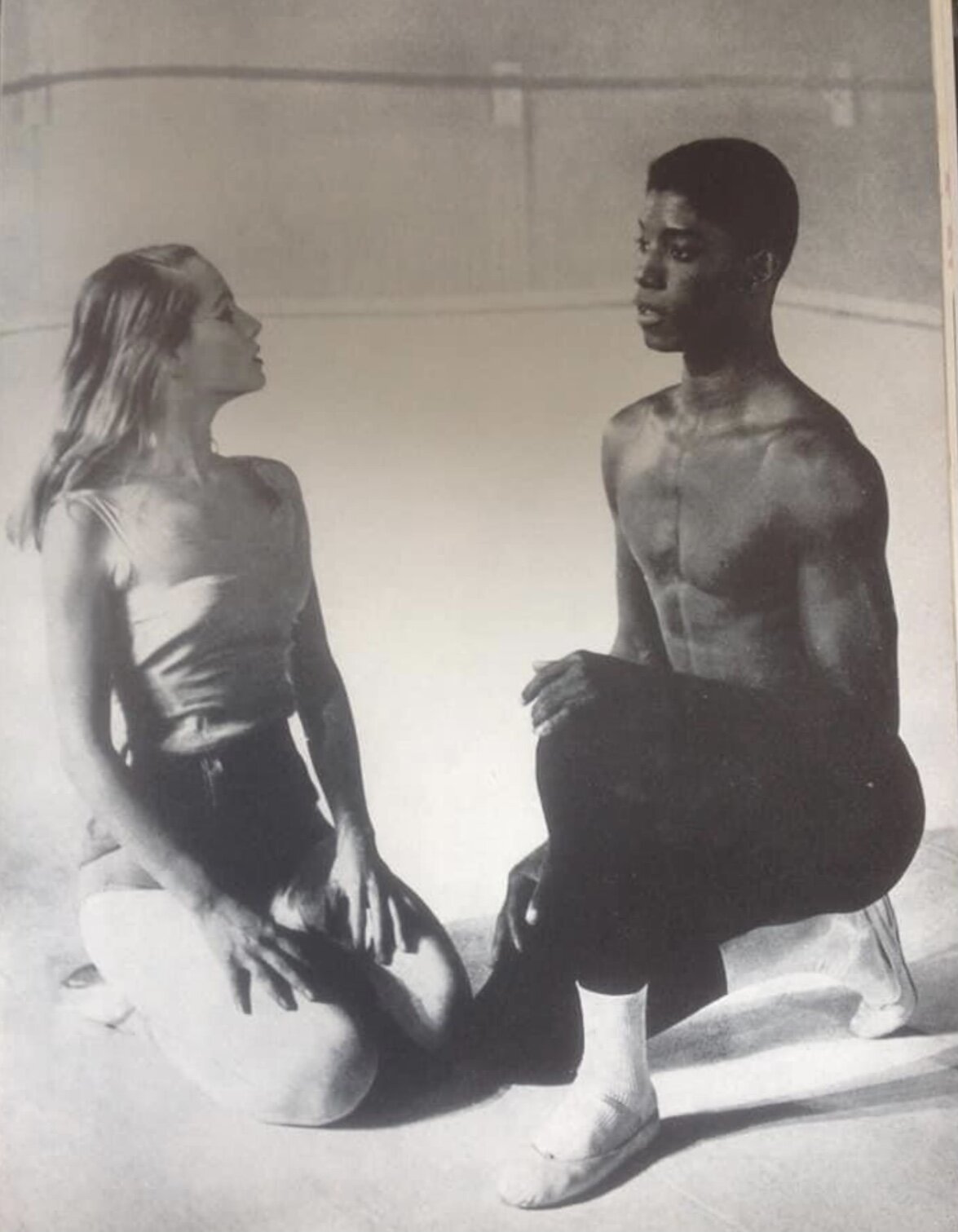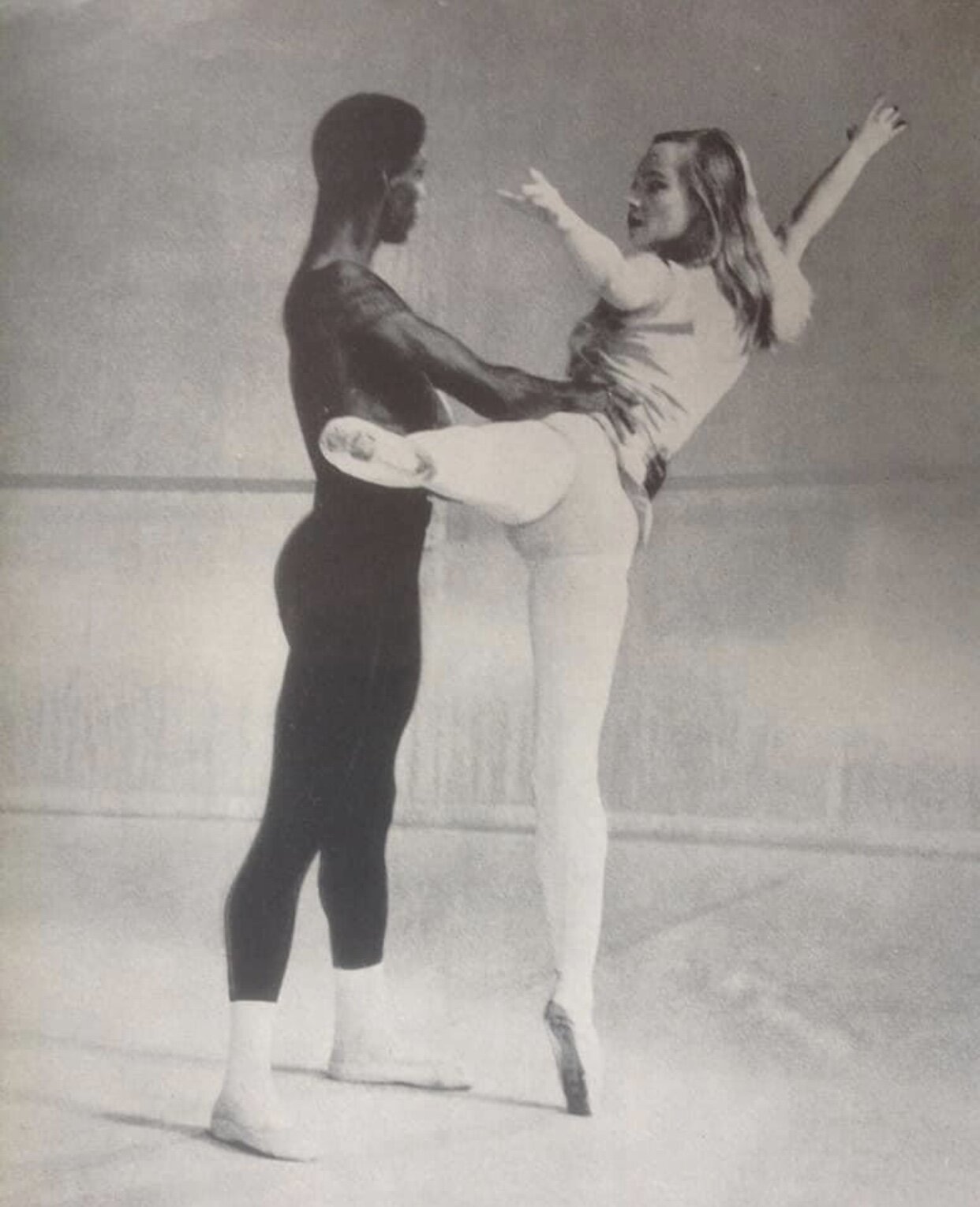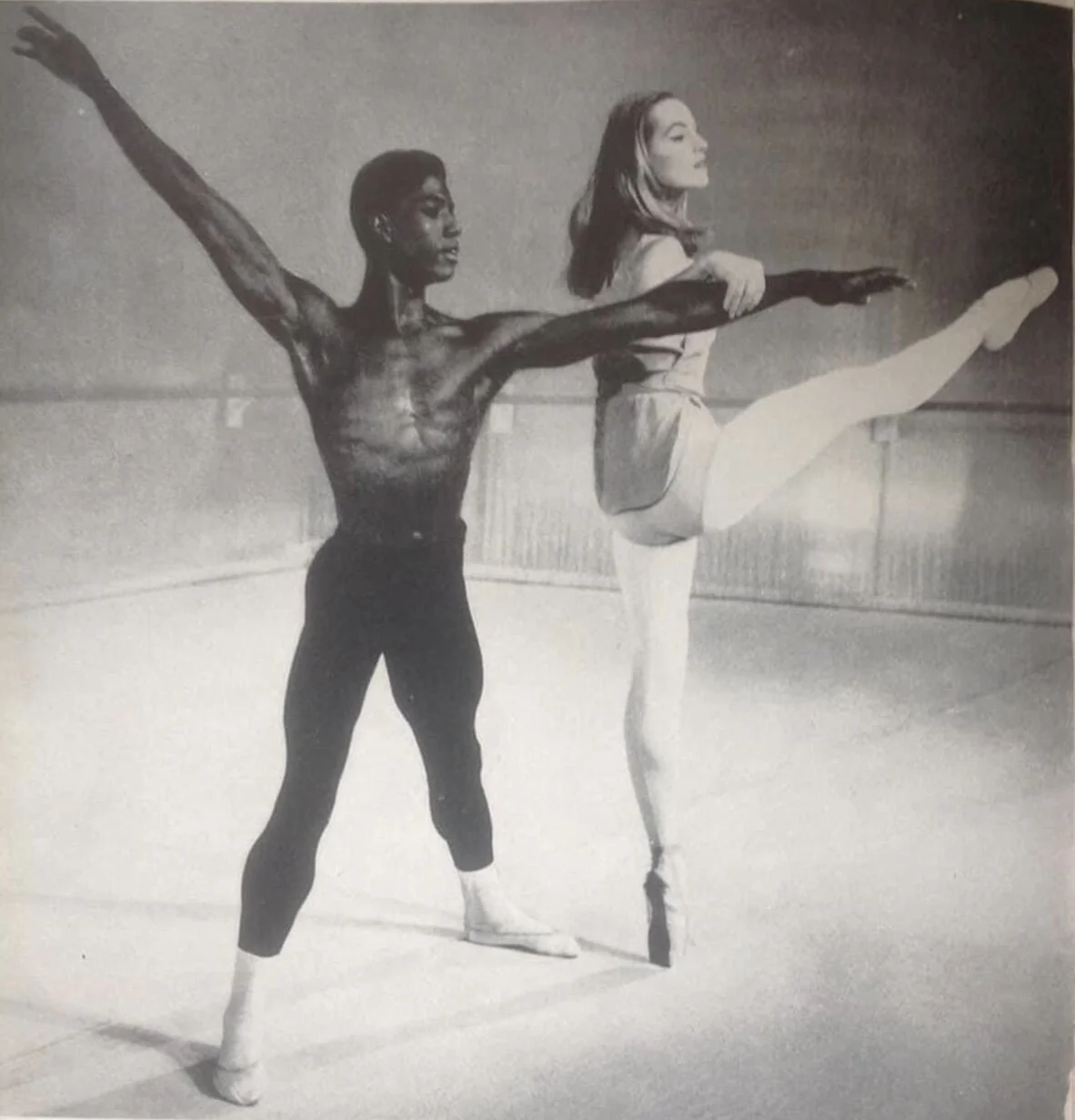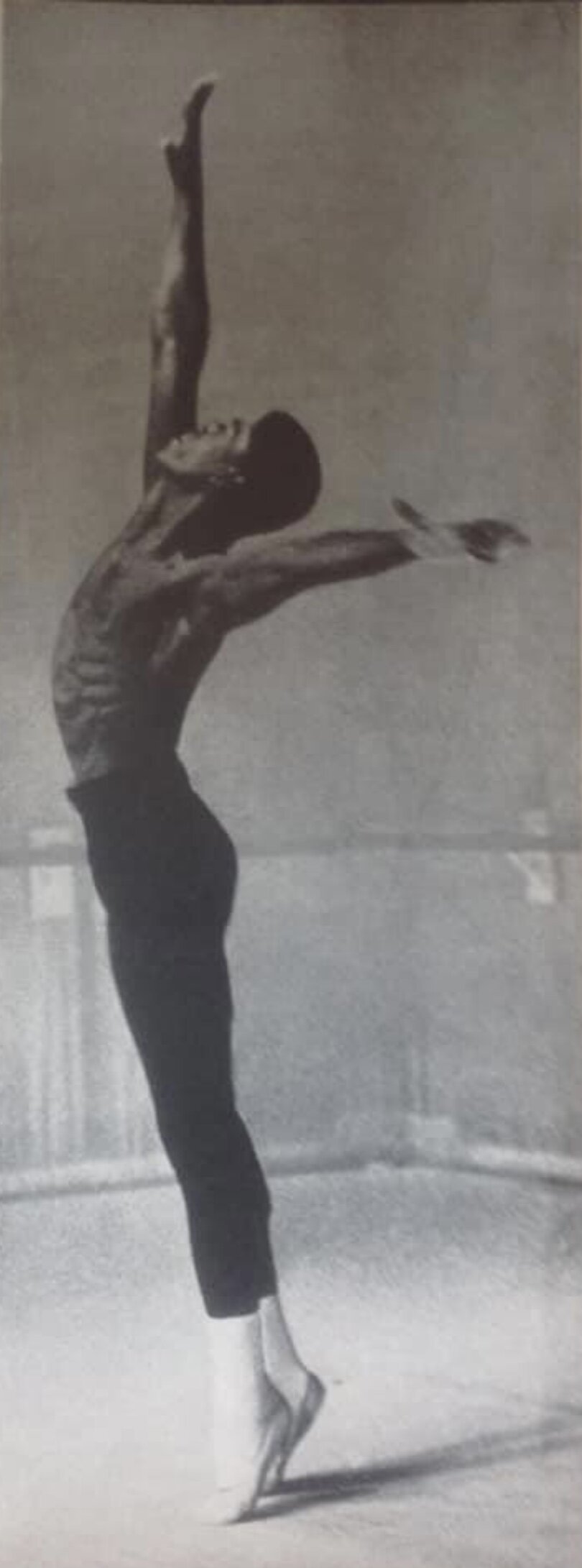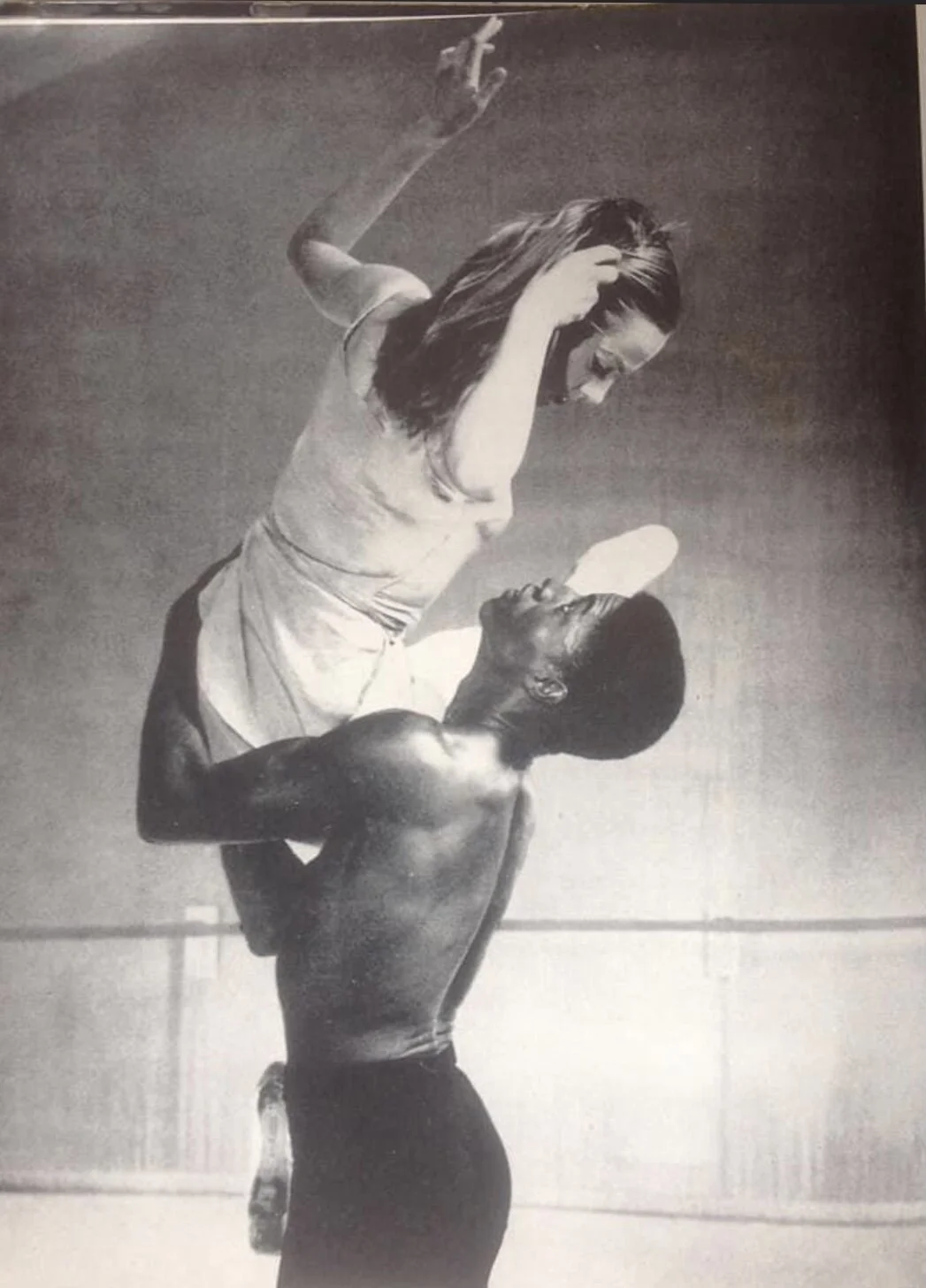John Jones - Black History Month in Dance, 2021
25; 26. For Black History Month, let’s commemorate John Jones, who broke the colour barriers in many places that Arthur Mitchell and “Agon” had not yet reached. New York City Ballet did not allow Jerome Robbins to cast the African American dancer Louis Johnson (see 24 in this series) in the 1953 world premiere of the Robbins “Afternoon of a Faun”. (It went instead to the dark-skinned Francisco Moncion, born in the Dominican Republic.) In 1959, however, Robbins cast the very dark-skinned African American dancer John Jones in that role, opposite Wilma Curley, in Robbins’s own company, Ballets U.S.A. (my thanks to Stacey Prickett for this information); and then again in 1961, this time with the fifteen-year-old Kay Mazzo.
The 1961 production toured to Paris, London, Broadway, and, among other parts of the United States, the Kennedy White House, at a time when it was quite something to present a mixed-cast kiss south of the Mason-Dixon Line. It was also filmed twice for television in the U.K. and Europe (both may be seen in the Dance Division of the New York Public Library for the Performing Arts); Robbins supervised the filming for British Granada TV, changing the initial view of the studio space so that you see the mirror and what the male dancer sees in it. Not only was this a sustained pas de deux for a black man and a white woman, it also featured his kiss on her cheek: another breakthrough in ballet.
Fifty and sixty years later, many viewers remembered the sensational effect that this casting made.In 2017, the Granda TV Film was one of several films of the Robbins “Faun” shown in a New York Public Library seminar, attended by Mazzo and several (white) men to whom Robbins had taught the male role; this film made the greatest impression on all present. (The camera catches both the beauty of Jones’s skin and the drama of the colour contrast with Mazzo’s.)
By that point (2017), Jones, alas, had left the United States (perhaps in 2013), I forget for which country; I think it was that year that he died. As a young man, he had also been taught the Nijinsky “Faune” by none other than Antony Tudor, thus becoming the first of the few dancers to have appeared in both the Nijinsky and Robbins versions. (I’m unsure he if danced the Nijinsky professionally. Can anyone help? My information came from the late David Vaughan, who remained a friend of Jones for decades.)
Saturday 6 February
27; 28; 29; 30; 31. For Black History Month, more photos of John Jones in Jerome Robbins’s “Afternoon of a Faun”. My old colleague Stacey Prickett has announced that her researches into Robbins’s Ballets U.S.A. led her to discover that Jones first danced “Faun” in a 1959 Ballets U.S.A. season and tour; that year, he partnered Wilma Curley, a dancer Robbins especially admired. Jonathan Gray, editor of “Dancing Times”, has found these photographs, *by Mike Davis*, of Jones and Curley in “Princess Ballet Book no 3”.
It remains true that Jones’s 1961 appearances in “Faun” with Kay Mazzo had far more national and international impact: Paris, London, the Kennedy White House. Nonetheless how good to know that Robbins’s work with Jones began earlier.
Saturday 6 February
John Jones and Kay Mazzo, Ballets USA, 1961, in Jerome Robbins‘s “Afternoon of a Faun”
John Jones and Kay Mazzo, Ballets USA, 1961, in Jerome Robbins‘s “Afternoon of a Faun”
Wilma Curley and John Jones, Ballets USA, 1959, in Jerome Robbins’s “Afternoon of a Faun” (1953).
Wilma Curley and John Jones, Ballets USA, 1959, in Jerome Robbins’s “Afternoon of a Faun” (1953).
Wilma Curley and John Jones, Ballets USA, 1959, in Jerome Robbins’s “Afternoon of a Faun” (1953).
John Jones, Ballets USA, 1959, in Jerome Robbins’s “Afternoon of a Faun” (1953).
Wilma Curley and John Jones, Ballets USA, 1959, in Jerome Robbins’s “Afternoon of a Faun” (1953).


